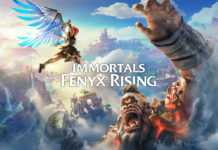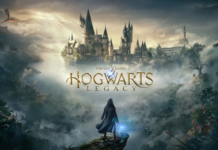Giving a final impression of a game that’s constantly changing is almost impossible, as components that might be broken now will undoubtedly get fixed later, and the game is always receiving new content to keep gameplay fresh. RIFT challenged WoW, both with gameplay and to-the-point advertisements (“We’re not in Azeroth anymore”), striving to be the quintessential “WoW Killer” that new MMOs are automatically christened as once they hit the market. Though it’s not much of a killer, RIFT can definitely stand toe-to-toe with the MMO juggernaut.
Entering the world of RIFT, you’ll witness the complete destruction of the lands of Telara. You take part as one of the Ascended, a resurrected warrior brought back to fight and defend the lands against the demon Regulos—playing either as the devout Guardians, who follow the gods of Telara, or the technological Defiants. This climactic opening sets the tone for the rest of the game.
During this time, you will also choose three different Souls (talent trees) for your Calling (class). The Warrior, Cleric, Rogue and Mage each have eight souls, letting players customize exactly to their liking. Do you want a damage-dealing mage with a bonus focus on healing or a spell-absorbing warrior, able to summon a pet into battle? These creative options make the class system one of the most versatile of any MMO. What’s more, you’re eventually able to acquire every soul and switch roles with ease, assuming you’re not currently engaged in battle.
After your brief bout with Regulos, you’re transported back in time to prevent the destruction from ever taking place. It’s here that the structure starts to look extremely familiar to MMO veterans: take on quests, kill and collect, return and claim your rewards. Though these quests are obviously far from a breakthrough in the MMO grind, the design ensures you spend little time wandering around and more time earning XP.
Of course, the biggest and most notable feature in RIFT is the rifts themselves. While questing or exploring, an elemental rift can tear open in the sky and unleash hordes of monsters upon a particular area. These instances are completely random, revving up the excitement when you’re casually collecting berries and then suddenly standing under a fire rift, watching it tear open the sky and pour out waves of minions. This is where RIFT takes a cue from Warhammer, as rifts are essentially the game’s public quests. As you near a rift, you’re able to join other participants in trying to seal the rift with a single button press. Each rift has multiple stages that increase in difficulty and oftentimes require you to act within a time limit. This makes teamwork absolutely essential, as charging into an open rift on your own is almost a guaranteed suicide. After each successful rift closing, the players who helped receive rewards based on their amount of contribution.
The rifts can also summon monsters that march the lands toward Wardstones, which are located in NPC-populated areas. If these Wardstones fall, so do the NPCs around them—even the quest-givers. This encourages players to rush to these places and defend them as well as they’re able. Sure, this can be a quick and easy affair if just one rift opens, but when the entire map is exposed and 20 rifts appear at once, it becomes a desperate scramble to keep the zones safe.

These instances, though fun, happen quite frequently, so if you’re in the middle of a rather intensive quest, be prepared to either drop everything and defend or try to escape involvement (not an easy feat). After completing a tough questline, I found the outpost containing the NPC overrun by a fire rift that exceeded my current level. Unless people are willing to lend assistance, you either have to fight (and possibly die) or run around pathetically until help arrives.
Dungeons don’t offer anything new to people who have been raiding since the early days of WoW, but these are fun nonetheless and provide a decent amount of challenge. Starting at level 17 for both Defiant and Guardians, adventurers can explore a few dungeons, which can consume anywhere from 45 minutes to an hour and a half. For those who have reached the level 50 cap, endgame dungeons are present and offer a fair amount of extra content.
Take a quick glance at the world map and it won’t exactly wow you with its size, but the entire world is actually quite huge. The first 20 levels are essentially spent in the first zone, which is not small by any means and quite impressive. RIFT’s take on flight paths (a quicker way to travel from point A to B on the world map) is done through Porticulum Masters. Basically, they work the same way as in WoW, except they offer no flashy flyover and there are much less of them in a given area. You’ll probably spend a lot of time walking around. Thankfully, mounts are available to make that process much faster, though anyone with the Collector’s Edition obtained immediate access to the two-headed turtle Tartagon mount.

When you’re not battling elemental forces or grinding your way through quests, you’ll occupy your time with crafting. Unfortunately, this activity follows the exact same formula seen in other MMOs without many changes implemented. You pick three out of the nine given professions, increase their proficiency through use (no more than a click of a button), and create new items through recipes or sell your wares to make some extra money. It’s a shame the process didn’t undergo any improvements, as many players enjoy crafting new items rather than plowing through quests.
Starting at level 10, you’re also able to participate in PVP, much like Warhammer. A PVP menu lets players choose from four different Warfronts, and the game simply queues your spot until you’re able to join. The earliest Warfront has players scrambling to acquire and hold the Fang of Regulos for the longest time possible, until enough points are accumulated. While it’s in your possession, you’re unable to attack, making teamwork a necessity. Not only are these sessions extremely fun, but they also reward players with special currency that can be used to buy PVP-specific items and gear.
One of the most addicting aspects of RIFT is the artifact collecting metagame. Little orbs of light are scattered throughout the lands of Telara, forcing players to scout each area. These artifacts can be placed into a collection, requiring multiple items. Once a set is complete, it can be exchanged for a hefty reward.

The presentation rounds itself out with impressive visuals that might not rival those of Final Fantasy XIV, but your characters look good donning detailed armor sets, and the many landscapes you venture through are equally as breathtaking. The score is monumental, with vocals powering select city themes and an encouraging theme livening battles.
RIFT has a sense of familiarity that works both for and against it. On the plus side, it lets players familiar with the genre jump into the action without problem. MMOs such as FFXIV wanted their own take on the online formula, resulting in a buggy disaster and a complete departure from the genre. However, people hoping for a change of pace might find the blend of World of Warcraft and Warhammer a bit too mundane. For what RIFT tries to do, it does very well. I rarely felt bored with all the random events and rifts constantly breaking up the monotony of questing. It’s also important to give Trion a tremendous amount of credit for releasing such a “complete” MMO. Sure, my game crashed on a few occasions, but I never encountered any major or even minor bugs. As long as this game continues to receive care and attention, there will be quite a few players taking a vacation from Azeroth to experience the salvation of Telara.









